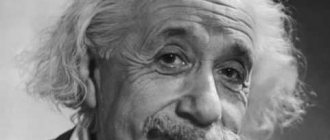What are socialization mechanisms?
Human socialization begins at birth and continues throughout life. To better understand the issue, it is necessary to carefully study the essence of this phenomenon. It is also necessary to define the main mechanisms that take part in this process.
Socialization is the process of a person acquiring certain values, norms and knowledge that help him function in society as a full member.
Its actions are aimed at:
- social adaptation of the individual (adjustment) so that he can feel like “everyone”;
- individualization (isolation) of a person so that she can have and follow her own opinion;
- adaptation (adaptation) for searching and determining a place in life.
In the process of active activity, a person assimilates social experience and turns it into his own achievements, then reproduces it for the development of subsequent generations. The whole process takes place through interaction with peculiar “helpers”, which are called socialization mechanisms.
Page 1 of 6
Modern Russia is in a state of formation of a new social system. The social norms of modern Russian society for the current period do not represent a natural adaptive norm of development for the younger generation due to the crisis in such areas of life support as education, healthcare, communications, transport, due to interethnic conflicts, decline in spirituality, morality, changes in value orientations, and the gap between citizens and official power, the growth of various forms of social deviations.
The spiritual life of children, adolescents, young people, due to insufficient formation and pronounced lability of such socially significant parameters as orientation, interests, moral and moral value system, as well as the worldview in general, is subject to violent influence from such factors as asocial living conditions, marginalization and criminalization, education crisis, dehumanization, deintellectualization. Unfortunately, aggressiveness has become a common pronounced feature of Russian society. Children and adolescents, due to their inexperience, immaturity, and suggestiveness, are not protected from manifestations of evil, violence, cruelty, lack of culture, rudeness, and ignorance.
Negative trends in social development are affecting ever larger sections of adolescents and young people, lowering the age limit, expressing themselves in various forms of destructive behavior and causing a “crisis of socialization.” The increase in bitterness against the backdrop of social lack of demand and hopelessness in the minds of the overwhelming majority of young people, while cultivating elitism and permissiveness in the minds of a small but observable minority, with the “marketization” of morality, aggravates the already quite acute social conflict, prolonging and deepening it.
A significant “contribution” to the popularization and dissemination of precisely these, by no means the best, manifestations among young people has been made in the last decade by the media.
On the one hand, the media promote public awareness and free discussion on the “acute problems” of crime, suicide, drug addiction, corruption and organized crime, adolescent delinquency, prostitution, etc. On the other hand, the media often abuse the demonstration and relish of violence, unqualifiedly present factual materials, cultivate aggression, superior physical strength, glorification of criminals, permissiveness and impunity, disrespect for national, state, cultural and human values.
The purpose of the work is to determine the direction and degree of influence of the media on the socialization of adolescents.
Object of study: the process of socialization.
Subject of research: social behavior of adolescents.
Hypothesis: It is assumed that the media play a significant, but not the main role in the socialization of adolescents.
In accordance with the purpose and hypothesis, the following tasks are set for the study:
1. Characterize the age and individual characteristics of adolescents.
2. Consider socialization as a socio-pedagogical phenomenon.
3. Identify the nature and degree of influence of the media on teenage children.
- Back
- Forward >>
Approaches to socialization mechanisms in sociology
Mechanisms of psychological defense of the individual
The mechanisms of socialization have been studied for many years in various socio-psychological directions:
- phenomenological;
- humanistic;
- cognitive;
- behavioral;
- dispositional.
In traditional psychology, sociology and pedagogy, all these areas do not intersect, but research into approaches to studying the mechanisms of socialization are interconnected.
L.S. Vygotsky believed that the foundations of socialization are the development of intelligence and language acquisition. J. Piaget promoted the idea that in order to adapt a person to the environment, it is necessary to develop thinking abilities. But these skills alone were not enough to integrate a person into a single society.
L.S. Vygotsky
Important! To become part of a group, it was necessary to imitate its norms, customs, and stereotypes.
G. Tarda was the first to come to this idea. Thanks to him, the role of imitation became ingrained in the understanding of socialization. Later, the French sociologist identified 2 more mechanisms, which include:
- Device. The struggle between people and their ideas leads to gradual adaptation and compromise.
- Opposition. Internal conflict of a person with his negative attitudes, stereotypes and norms. The result of the opposition is the presentation of the individual with a new model of behavior.
C. Cooley believed that the main mechanisms of socialization of any individual depend on a small group in which individuals are connected by an informal union. At the same time, in society there is not only imitation, but also feedback - approval.
Stages of personality socialization
Personality orientation - what is it in psychology, its types
Personal socialization develops in three main phases:
- First, a person masters social values and norms. As a result of this process, the individual learns to fit into the society in which he finds himself.
- A person strives for his own personalization, development of abilities, and also tries to influence the people around him.
- At the final phase, each individual is integrated into a certain social circle, in which their own capabilities and properties are revealed.
Personal socialization process
A successful outcome is possible only if each phase proceeds sequentially. The process itself includes 2 main stages of personality socialization. They can be divided into several parts depending on the age of the person.
Stages of personality socialization
| Stage | Age division | a brief description of |
| Primary socialization | Childhood (from birth to 9 years) | At this stage of socialization, 70% of a person’s personality is formed, and the “foundation” of socialization is laid. At this age, the baby’s understanding of his own “I” naturally occurs. The child uses any means that are likely to help him get to know the world better. |
| Adolescence (10 to 15 years) | The child experiences the greatest number of physiological changes. Puberty occurs and personality development continues. At this age, children treat everything more responsibly (they try to take on as many tasks as possible). | |
| Youth (from 16 to 18 years old) | The most dangerous and stressful period. Now each individual can consciously, without anyone’s help, decide which group of people should join for further stay and which form of behavior to choose. | |
| Secondary socialization | Maturity – Stage I (from 18 to 30 years) | Becoming socialized and basic instincts are redirected towards self-love and work. The formation of the first idea of one’s own person in girls and boys is carried out through work, friendship and intimate relationships. Incorrect mastery of this period or incorrect perception of oneself can result in psychological problems in older age: with the opposite sex, building a family. |
| Maturity – stage II (from 31 to 50 years) | This stage is associated with the active self-realization of the individual through work, family, and children. A person tries to convey his life and professional experience to other people. | |
| Old age (51 years and older) | There is a gradual decline in physical capabilities. A person is fully aware of his own “I” and accepts his way of life. |
As can be seen from the table, it is at a young age that the active development of personal socialization occurs.
Socio-psychological mechanisms of socialization
Types of human memory in psychology, classification of main types
Modern sociologists have come to the conclusion that the process of personal socialization occurs through 5 main mechanisms.
Traditional
The action of the traditional mechanism of personality socialization is aimed at the unconscious assimilation by a person of social stereotypes, opinions and norms of behavior that come from the immediate environment:
- friends;
- acquaintances;
- families.
Gaining new perspectives occurs through a lack of critical thinking and also through imprinting. As an example of the effectiveness of this mechanism, we can consider the following situation: a person knows perfectly well what “needs” to do to solve existing problems, but his method contradicts the views of the family. Therefore, the traditional “hook” will slow down the process.
Condemnation of an individual by a group
Institutional
The implementation of the institutional mechanism of socialization is carried out with the help of various organizations. Auxiliary institutions can be of two types:
- Specialized. They are created to implement socialization functions. This type can include any educational organizations: schools, lyceums, institutes, colleges, academies, cultural and educational companies.
- Non-specialized. Along with their main activities, they perform socialization functions. For example, this is the army.
Thanks to the institutional mechanism, the individual acquires useful social experience of communication, and is also included in the life of society and its culture.
Stylized
Its action is carried out only within a specific subculture. When leaving it, the influence of the stylized mechanism will also change.
Additional Information. A subculture is a set of values, rules of behavior and norms that are characteristic of a certain group of people.
It is the totality of views that determines the lifestyle and thinking of this category of people.
Interpersonal
The functioning of the interpersonal mechanism of socialization is carried out during the interaction of the individual with people significant to him. Important personalities for a person can be:
- relatives: parents, brother, sister;
- friends and acquaintances;
- Colleagues.
Despite the fact that significant people may be members of a certain group, their effect on an individual can go against the norms and rules of the subculture.
The interpersonal mechanism can be viewed as a process of identification in which an individual internalizes the behavioral and psychological aspects inherent to his biological sex.
reflective
The action of the reflexive mechanism of socialization occurs through individual experiences and internal dialogue in which the individual tries to evaluate the values and behavior of society.
Internal dialogue
Important! Only after careful understanding and analysis of the information received does a person decide to follow or refute the principles that have developed in the family, work team or other group of people.
Thanks to this mechanism, personality formation and change occurs. After all, only by realizing the surrounding reality can a person act to find himself and his place in life.
World of Psychology
Social attitude is a state of psychological readiness of an individual to behave in a certain way, based on past social experience and regulating the social behavior of the individual. (Allport). In Western social psychology, the term “attitude” is used to denote social attitudes. Social attitude has 3 components:
- Cognitive, involving rational activity;
- Affective (emotional assessment of an object, manifestation of feelings of sympathy or antipathy);
- Conative (behavioral) involves consistent behavior towards an object.
Various authors have identified four key functions (which have some similarities with the attitude functions in the theory of Smith, Bruner and White).
- Instrumental (adaptive, utilitarian) function: expresses adaptive tendencies of human behavior, helps to increase rewards and reduce losses. Attitude directs the subject to those objects that serve to achieve his goals. In addition, social attitude helps a person evaluate how other people feel about a social object. Supporting certain social attitudes enables a person to gain approval and be accepted by others, since they are more likely to be attracted to someone who has attitudes similar to their own. Thus, an attitude can contribute to a person’s identification with a group (allows him to interact with people, accepting their attitudes) or leads him to oppose himself to the group (in case of disagreement with the social attitudes of other group members).
- Ego-protective function: a social attitude helps resolve internal conflicts of the individual, protects people from unpleasant information about themselves or about social objects that are significant to them. People often act and think in ways to protect themselves from unpleasant information. For example, in order to increase his own importance or the importance of his group, a person often resorts to forming a negative attitude towards members of the outgroup.
- Function of expressing values (function of self-realization): attitudes give a person the opportunity to express what is important to him and organize his behavior accordingly. By carrying out certain actions in accordance with his attitudes, the individual realizes himself in relation to social objects. This function helps a person to define himself and understand what he is.
- Function of organizing knowledge: based on a person’s desire for semantic ordering of the world around him. With the help of attitude, it is possible to evaluate information coming from the outside world and correlate it with a person’s existing motives, goals, values and interests. The installation simplifies the task of learning new information. By performing this function, attitude is included in the process of social cognition.
Types of social attitudes:
- Social attitude toward an object is the individual’s willingness to behave in a specific way. 2. Situational attitude - the willingness to behave in a certain way in relation to the same object differently in different situations. 3. Perceptual attitude - readiness to see what a person wants to see.4. Partial or particular attitudes and general or generalized attitudes. An attitude toward an object is always a private attitude; a perceptual attitude becomes general when a large number of objects become objects of social attitudes. The process from particular to general proceeds as it increases. Types of attitudes according to their modality: 1. positive or positive,
- negative or negative,
- neutral,
- ambivalent social attitudes (ready to behave both positively and negatively) – marital relationships, managerial relationships.
A stereotype is a well-established attitude towards current events, developed on the basis of comparing them with internal ideals. A system of stereotypes constitutes a worldview.
The concept of “stereotype” entered Western socio-political discourse at the suggestion of Walter Lippmann, which he used in describing his original concept of public opinion in 1922.
According to Lippman, it is possible to derive the following definition: a stereotype is a pattern of perception, filtering, and interpretation of information accepted in a historical community when recognizing and recognizing the surrounding world, based on previous social experience. The system of stereotypes represents social reality. Dynamics of stereotypes: A stereotype begins to operate even before the mind turns on. This leaves a specific imprint on the data that is perceived by our senses even before this data reaches the mind. Nothing resists education or criticism more than a stereotype, since it leaves its mark on the facts at the moment of their perception.
To a certain extent, external stimuli, especially spoken or printed ones, activate some part of the stereotype system, so that the immediate impression and the previously formed opinion appear in the mind simultaneously.
In cases where experience comes into conflict with a stereotype, a twofold outcome is possible: if the individual has already lost a certain flexibility or, due to some significant interest, it is extremely inconvenient for him to change his stereotypes, he can ignore this contradiction and consider it an exception that confirms the rule, or find some error, and then forget about this event. But if he has not lost curiosity or the ability to think, then the innovation is integrated into the already existing picture of the world and changes it.
Socialization — the formation of personality — is the process of an individual’s assimilation of patterns of behavior, psychological attitudes, social norms and values, knowledge, and skills that allow him to function successfully in society. Human socialization begins at birth and continues throughout life. In its process, he assimilates the social experience accumulated by humanity in various spheres of life, which allows him to perform certain, vitally important social roles. Socialization is considered as a process, condition, manifestation and result of the social formation of personality. As a process, it means the social formation and development of personality depending on the nature of human interaction with the environment, adaptation to it, taking into account individual characteristics. As a condition, it indicates the presence of the society that a person needs for natural social development as an individual. As a manifestation, it is a person’s social reaction, taking into account his age and social development in the system of specific social relations. It is used to judge the level of social development. As a result, it is a fundamental characteristic of a person and his characteristics as a social unit of society in accordance with his age.
In sociology, there are two levels of socialization: the level of primary socialization and the level of secondary socialization. Primary socialization occurs in the sphere of interpersonal relationships in small groups. The primary agents of socialization are the individual’s immediate environment: parents, close and distant relatives, family friends, peers, teachers, doctors, etc. Secondary socialization occurs at the level of large social groups and institutions. Secondary agents are formal organizations, official institutions: representatives of the administration and school, army, state, etc. Mechanisms of socialization: Socialization of a person in interaction with various factors and agents occurs through a number of, so to speak, “mechanisms.” Agents + factors = mechanisms of socialization. Divided into:
- Socio-psychological mechanisms
- Social and pedagogical mechanisms
The socio-psychological mechanisms include the following: Imprinting (capturing) - a person’s fixation at the receptor and subconscious levels of the features of vital objects affecting him.
Imprinting occurs primarily during infancy. However, even at later age stages it is possible to capture some images, sensations, etc.
Existential pressure is the mastery of language and the unconscious assimilation of norms of social behavior that are mandatory in the process of interaction with significant persons.
Imitation is following an example or model. In this case, it is one of the ways of a person’s voluntary and, most often, involuntary assimilation of social experience. Reflection is an internal dialogue in which a person considers, evaluates, accepts or rejects certain values inherent in various institutions of society, family, peer society, significant persons, etc.
Reflection can be an internal dialogue of several types: between different human selves, with real or fictitious persons, etc. With the help of reflection, a person can be formed and changed as a result of his awareness and experience of the reality in which he lives, his place in this reality and yourself.
The socio-pedagogical mechanisms of socialization include the following:
The traditional mechanism of socialization (spontaneous) is a person’s assimilation of norms, standards of behavior, views, stereotypes that are characteristic of his family and immediate environment (neighbors, friends, etc.). This assimilation occurs, as a rule, at an unconscious level with the help of imprinting, uncritical perception of prevailing stereotypes. The effectiveness of the traditional mechanism is very clearly manifested when a person knows “how to”, “what is necessary”, but this knowledge of his contradicts the traditions of his immediate environment. In this case, the French thinker of the 16th century turns out to be right. Michel Montaigne, who wrote: “...We can repeat our own as much as we like, but custom and generally accepted everyday rules drag us along with them.” In addition, the effectiveness of the traditional mechanism is manifested in the fact that certain elements of social experience, learned, for example, in childhood, but subsequently unclaimed or blocked due to changed living conditions (for example, moving from a village to a big city), can “pop up” in human behavior during the next change in life conditions or at subsequent age stages.
The institutional mechanism of socialization, as follows from the name itself, functions in the process of interaction of a person with the institutions of society and various organizations, both specially created for his socialization, and implementing socializing functions along the way, in parallel with their main functions (production, public, club and others structures, as well as mass media). In the process of interaction of a person with various institutions and organizations, there is an increasing accumulation of relevant knowledge and experience of socially approved behavior, as well as experience of imitation of socially approved behavior and conflict or conflict-free avoidance of fulfilling social norms. It must be borne in mind that the media as a social institution (print, radio, cinema, television) influence the socialization of a person not only through the broadcast of certain information, but also through the presentation of certain patterns of behavior of characters in books, films, and television programs. The effectiveness of this influence is determined by the fact that, as subtly noted back in the 18th century. reformer of Western European ballet, French choreographer Jean Georges Nover, “since the passions experienced by heroes are distinguished by greater strength and certainty than the passions of ordinary people, it is easier to imitate them.” People, in accordance with their age and individual characteristics, tend to identify themselves with certain heroes, while perceiving their characteristic patterns of behavior, lifestyle, etc.
The stylized mechanism of socialization operates within a certain subculture. Subculture in general terms is understood as a complex of moral and psychological traits and behavioral manifestations typical of people of a certain age or a certain professional or cultural layer, which as a whole creates a certain style of life and thinking of a particular age, professional or social group. But a subculture influences a person’s socialization insofar and to the extent that the groups of people that bear it (peers, colleagues, etc.) are referents (significant) for him.
The interpersonal mechanism of socialization functions in the process of interaction between a person and persons who are subjectively significant to him. It is based on the psychological mechanism of interpersonal transfer due to empathy, identification, etc. Significant persons can be parents (at any age), any respected adult, peer friend of the same or opposite sex, etc. Naturally, significant persons can be members certain organizations and groups with which a person interacts, and if these are peers, then they can also be carriers of an age subculture. But there are often cases when communication with significant persons in groups and organizations can have an influence on a person that is not identical to that which the group or organization itself has on him.
Psychological mechanisms of socialization
Issues related to socialization were actively studied by N. Smelser, J. Clausen, E. Erikson, Z. Freud, L.S. Vygotsky and other great psychologists. Summarizing all available data, we can identify 5 universal psychological mechanisms that must be taken into account when educating an individual.
Imprinting
The word “imprinting” comes from the word imprint, which means “to leave a mark”, “to record”. Imprinting is a person's fixation on things that are important to him. This happens at the subconscious and receptor levels.
Important! Imprinting is characteristic mainly of infancy. It is possible that some sensations or images will be captured at later stages of life.
Imprinting does not take much time. A few seconds are enough for fixation. For example, a mother immediately gets used to her newborn baby and begins to feel connected and close to him. This phenomenon is also characterized by irreversibility. All created images and sensations are preserved for the rest of your life.
Imitation
Imitation, as a psychological mechanism of socialization, is the little-conscious or unconscious adherence of an individual or an entire group of people to a specific model or standard by borrowing and reproducing the behavior or character traits of other individuals.
Additional Information. G. Tarde developed a theoretical concept of this phenomenon. It lies in the fact that imitation is necessary for the existence and development of society. Thanks to this mechanism, group values and norms emerge.
Son's imitation of father
Identification
Identification from the Latin language Identificare is translated as “to establish a match”, “to identify”. It combines all the social and psychological attitudes that a person has. Thanks to this mechanism, the individual begins to unconsciously identify himself with other people or images.
Identification can be of 2 types:
- Adequate. In which a person feels comfort while actually belonging to any group or image. For example, “I am a mother”, “I am a psychologist”, “I am a student”.
- Inadequate. With this identification, the individual faces a serious conflict during self-determination. For example, “I am embarrassed by my parents,” “I am dissatisfied with my social status,” “I do not like my social role.”
Identification is inextricably linked with the individual’s assimilation of stereotypes, views and norms of the social environment in which he lives. It is according to the “patterns” of other people that a person forms his own “I”.
Reflection
Reflection is a kind of internal dialogue, thanks to which a person begins to become aware of his individual characteristics, their manifestation in the outside world, as well as the reaction of other people to this.
Important! Thanks to this mechanism, a person can adjust his image to become more or less attractive.
No matter how well a person understands himself, his own image will still be distorted. Only other individuals can serve as a “mirror” through which a person will look at his “I” most adequately.
Existential pressure
Speech culture is a powerful driving force that has a significant impact on the orientation and self-awareness of an individual. In the process of communicating with loved ones, a person masters the language and also learns norms of behavior.
Important! This phenomenon is called existential pressure.
It is activated simultaneously with reflection. Thanks to these two mechanisms, cultural and behavioral exchanges take place in the group.
Mom teaches child to speak
Socialization mechanisms play an important role in the life of every person. They cannot be attributed to the “outskirts” of personality development. Thanks to them, a person develops and learns about the world around him.
Mechanisms of socialization: imprinting, existential pressure, imitation, reflection
There are different approaches to considering the “mechanisms” of socialization. Thus, the French social psychologist Gabriel Tarde considered imitation to be the main one. American scientist Yuri Bronfenbrener considers the mechanism of socialization to be progressive mutual accommodation (adaptability) between an active, growing human being and the changing conditions in which it lives.
V.S. Mukhina considers identification and separation of the individual as mechanisms of socialization, and A.V. Petrovsky – a natural change in the phases of adaptation, individualization and integration in the process of personality development.
Summarizing the available data from the point of view of pedagogy, we can identify several universal mechanisms of socialization that must be taken into account and partially used in the process of educating a person at various age stages. Psychological and socio-psychological mechanisms include the following:
Imprinting (imprinting – imprinting) is a person’s fixation at the receptor and subconscious levels of the features of vital objects affecting him. Imprinting occurs primarily during infancy. However, even at later age stages it is possible to capture some images, sensations, etc.
Thus, a traumatic experience received in childhood (up to 6 years) - humiliation, cruel treatment, etc., leaving its mark on the emotional sphere of the individual, can have a “delayed effect”, giving rise to cruel or aggressive behavior, emotional coldness, etc.
Imitation is the voluntary and involuntary following of any examples and patterns of behavior that a person encounters in interaction with people around him (primarily with significant persons), as well as patterns offered by the media.
Existential pressure (existence) is the influence of a person’s living conditions, which determines his mastery of his native language (in early childhood) and non-native languages at other age stages (in a situation of change in the linguistic environment), as well as the unconscious assimilation of norms of social behavior that are immutable in his society and necessary to survive in it.
Identification (identification) is an emotional-cognitive process of a person’s assimilation of norms, attitudes, values, and behavior patterns as one’s own in interaction with significant persons and reference groups.
Reflection is an internal dialogue in which a person considers, evaluates, accepts or rejects certain values inherent in various institutions of society, family, peer society, significant persons, etc. Reflection can be an internal dialogue of several types: between different human selves, with real or fictitious persons, etc.
Interesting
With the help of reflection, a person can be formed and changed as a result of his awareness and experience of the reality in which he lives, his place in this reality and himself. At the same time, there are also social and pedagogical mechanisms.
The above-mentioned psychological mechanisms of socialization operate in line with socio-pedagogical mechanisms, which include the following. The traditional mechanism of socialization (spontaneous) is the assimilation by a person of norms, standards of behavior, views, stereotypes that are characteristic of his family and immediate environment (neighbors, friends).
Social mores (traditions, customs, habits, stereotypes of mass behavior, etc.), widespread in specific regions, settlements, ethno-confessional and social strata, regulating the behavior of specific people, include prosocial, asocial, and antisocial (foul language, drunkenness , theft, etc.) elements.
Their assimilation occurs, as a rule, at an unconscious level through imprinting, uncritical perception of prevailing stereotypes (i.e. imprinting, existential pressure, imitation, identification).
Interesting
The effectiveness of the traditional mechanism is manifested when a person knows “how to”, “what is necessary”, but this knowledge of his contradicts the traditions of his immediate environment. In this case, the French thinker of the 17th century turns out to be right. Michel Montaigne, who wrote: “We can repeat our own as much as we like, but custom and generally accepted everyday rules drag us along with them.”
In addition, the effectiveness of the traditional mechanism is manifested in the fact that certain elements of social experience, learned, for example, in childhood, but subsequently unclaimed or blocked due to changed living conditions (for example, moving from a village to a big city), can “emerge.” » in human behavior during the next change in life conditions or at subsequent age stages.
The institutional mechanism of socialization, as follows from the name itself, functions in the process of interaction of a person with the institutions of society and various organizations, both specially created for his socialization, and implementing socializing functions along the way, in parallel with their main functions (production, social, religious, club and other structures, as well as mass media).
In the process of interaction of a person with various institutions and organizations, there is an increasing accumulation of relevant knowledge and experience of socially approved behavior, as well as experience of imitation of socially approved behavior and conflict or conflict-free avoidance of fulfilling social norms.
It must be borne in mind that such media of mass communication as a social institution (print, radio, cinema, television) influence the socialization of a person not only through the broadcast of certain information, but also through the presentation of certain patterns of behavior of characters in books, films, and television programs.
The effectiveness of this influence, as subtly noted back in the 18th century. reformer of Western European ballet, French choreographer J.J. Nover, is defined as follows: “... since the passions experienced by heroes are distinguished by greater strength and certainty than the passions of ordinary people, it is easier to imitate them.”
People, in accordance with their age and individual characteristics, tend to identify themselves with certain heroes, while perceiving their characteristic patterns of behavior, lifestyle, etc. Thus, all the previously mentioned psychological mechanisms of socialization operate within the framework of the institutional mechanism.
The stylized mechanism of socialization manifests itself within a certain subculture. Subculture in general terms is understood as a complex of moral, psychological and behavioral traits typical of people of a certain age or a certain professional or cultural layer, which as a whole creates a certain style of life and thinking of a particular age, professional, social, ethno-confessional group.
But a subculture influences a person’s socialization to the extent that the group members who bear it (peers, colleagues, etc.) are referent (significant) for him. That is, in line with the stylized mechanism, imitation and identification operate primarily.
The interpersonal mechanism of socialization functions in the process of interaction of a person with persons significant to him. It is based on the psychological mechanism of identification. Significant persons can be parents (at any age), any respected adult, a peer friend of the same or opposite sex, etc.
Naturally, significant persons can be members of certain organizations and groups with which a person interacts, and if they are peers, then they can also be carriers of an age subculture. But there are often cases when communication with significant persons in groups and organizations has an impact on a person that is not identical to that which the group or organization itself has on him. Therefore, it is advisable to distinguish the interpersonal mechanism of socialization as specific.
Human socialization occurs through all the mechanisms mentioned above. However, in different gender, age and socio-cultural groups, in specific people, the relationship between the roles of socialization mechanisms is different, and sometimes significant.
Thus, in the conditions of a village, small town, town, as well as in poorly educated families in big cities, the traditional mechanism can play a significant role. In a large city, institutional and stylized mechanisms are especially evident. For people of a clearly introverted type (i.e., turned inward, highly anxious, self-critical), the reflexive mechanism can become the most important.
Certain mechanisms play different roles in various areas of socialization. So, if we are talking about the sphere of leisure, about following fashion, then the leading one is often a stylized mechanism, and the lifestyle is often formed with the help of both traditional and stylized mechanisms.








